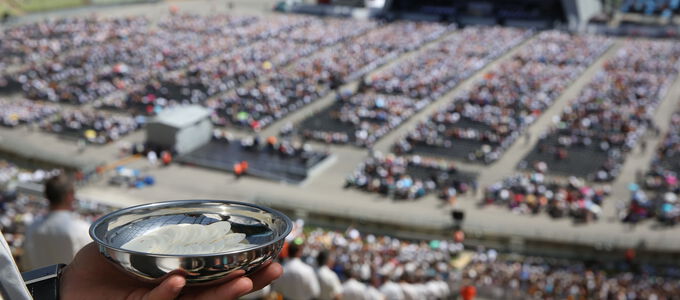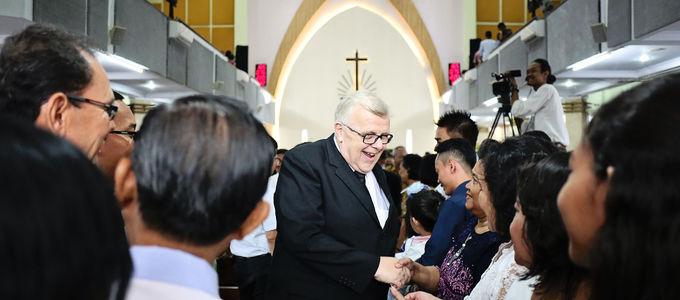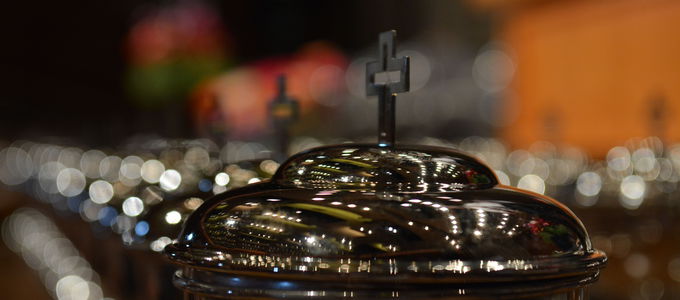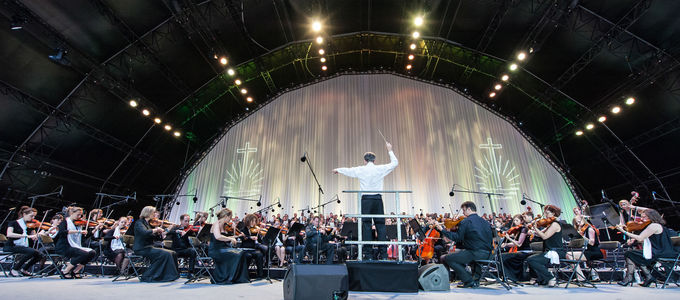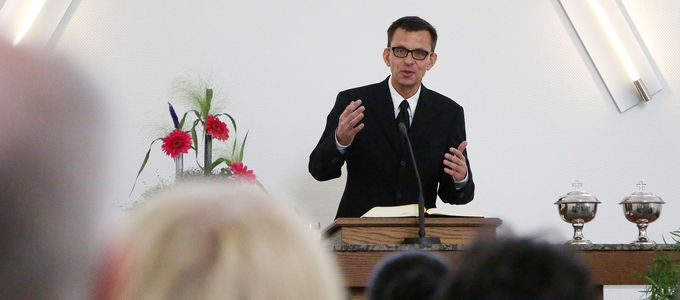
People love nothing more than capturing and sharing memorable experiences. And pictures tend to say more than a thousand words. But taking pictures at church? How can that work? Answers can be found in an e-book that has just been published internationally for the first time.
There are plenty of motifs: the building, the altar, the officiant, and above all the people: the children being baptised, wedding and anniversary couples, people congratulating them, ministers being ordained, those being retired, musicians, and choir leaders. And of course the feelings in a congregation: joy, emotion, intimacy, warmth.
Testifying with the camera
Should one even point a camera at all of this? That is a definite yes. “Photos are part of public relations work.” And: “Public relations work is missionary work.” This is how the book Photography in Divine Service puts it, which is now available for download in PDF format.
However, a divine service is an encounter with God. This has to do with contemplation and sanctification, which flourish best in silence. And it also produces intimate moments, which one wants to savour in a safe environment. An inconsiderate photographer can quickly become a disturbing factor—and sometimes a nuisance.
More than 1.2 million photos
The author of this book, Oliver Rütten, has been mastering this art for more than twen¬ty years: having snapped over 1.2 million photos of his own, many of them in a church environment, he has also conducted dozens of workshops as a trainer, and exchanged ideas with hundreds of other photographers.
Rütten, who works as an editor at nac.today, first published his know-how in an e-book in 2013. Now the New Apostolic Church International has decided to publish a revised edition of the book, and for the first time in the English language. An added bonus is the fact that photographers from across the world have submitted their favourite photographs.
Useful tips and etiquette
From communicating with the organisers to making a list of subjects to trouble shooting—this is a book full of practical tips from a professional. Jpeg or raw data? The book deals with technical questions as well as the basics of image design: from the golden ratio to playing with light and shadow.
Fair enough, other books on photography cover the same topics, right? Sure, but Photography in Divine Service does not only discuss the technical aspects of photography, but also gives concrete tips on etiquette in a church environment.
- How early communication with the organisers ensures that everything runs smoothly.
- Why it is better to have as few photographers as possible.
- How a good photographer blends in.
- How the camera respects the rights and feeling of those depicted.
- Why the altar area must remain sacred.
- When prayers, sacraments, and acts of blessing can be photographed?
And then there are tips on how a photographer can make the divine service an unforgettable experience of a different kind: for example, by publishing a picture of the officiant with his eyes closed—because it was the only photo he took of him. Or hiding four wireless flashes in the floral decorations to create better lighting of the altar area—leaving the officiant nearly blinded by end of the service.
Spiced with humour and armed with a lot of experience, Photography in Divine Service has tips and pointers for everyone—both the photographer whose job it is to take good photos, and the congregation who wants to enjoy a divine service without being disturbed by an inconsiderate photographer.







